UC Blogs
Bring on the Bed Bugs at the Bohart
They're the bugs you love to hate. Bed bugs, lice, ticks, mites, fleas and mosquitoes. If you want to see and/or learn more about them,...
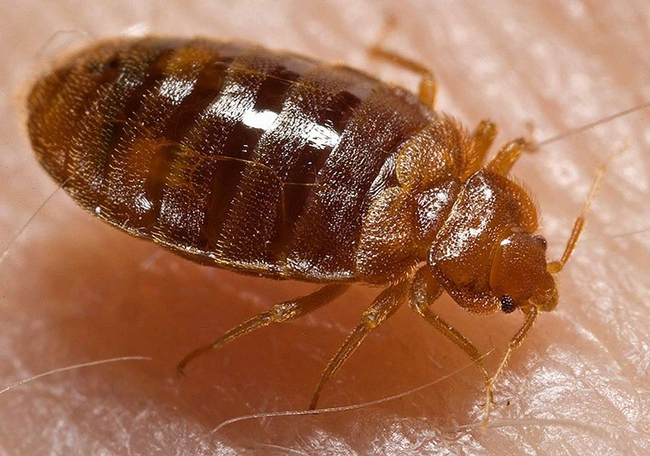
Bed bug. (Photo by Piotr Naskrecki, courtesty of the Centers for Disease Control and Prevention.)
Garden Questions to Ponder
If it is the driest year on record, and we had all those nights of temperatures in the 20’s followed by several days of record high temperatures for December and January, how is one supposed to attack the usual early-winter garden chores? If we are confused, think of the poor plants! Do we cut back the hydrangea? Prune the roses? Cut the Romneya coulteri (Matilija Poppy) down to half its size as the references direct? If the natives rely on winter rain, should we be watering them now since there is no rain?
Next to my blooming narcissus (!) are brown, frost-bitten sprigs of lantana. The Japanese maples have begun to bud and the camellias are in full bloom. The citrus are hanging on, but I doubt I will be making much lemonade, as the tiny lemons aren’t looking promising. The Salvia spathacea (Low Growing Pitcher Sage) continues to thrive and set more blooms. The vegetable garden looks great and we have begun to eat lettuce and spinach and eagerly await the first cauliflower. Well, some of us are eager for that delicacy anyway.
I water, I cut back, I have even fertilized some well-protected patio flowers because they are behaving as if it is spring. It is actually excellent gardening weather, with no rain pouring down, no muddy ground to cope with, and the short days mean our plants won’t require nearly as much water as those we might plant in late spring. Still, how do we know we are doing the right thing? The extended forecast does not show rain in the near future, and drought seems nearly certain.
As we plan and install drought-resistant gardens, this year has proven that we must also look for those plants that are hardy to 20 degrees. Some of my Australian natives did well this month, two different species of Grevillea, for example. Others did not – sadly my Melaleucas seem to have bitten the dust, but I will wait a while before declaring them casualties of the strange December of 2013. Meanwhile I will be researching the cold-hardiness of possible replacements, when I am not busy applying sunscreen and moving the hose!
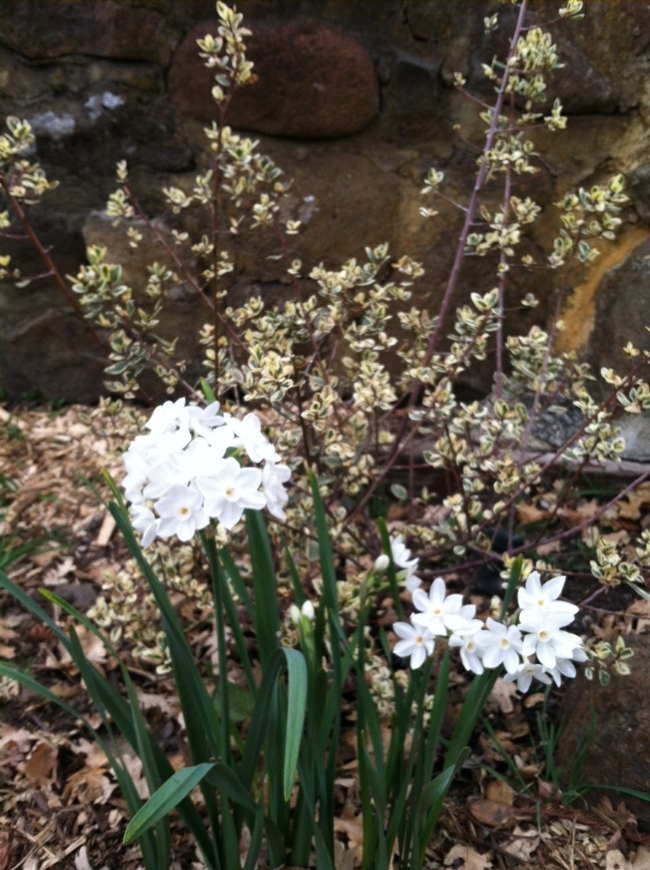
Crazy narcissus. (photo by Diana Bryggman)
Don't Forget These Tree Planting Tools
Are you thinking of planting a new tree in your yard? If it’s the first time you’ve planted a tree, or if it’s been a while since you planted one, you may want to familiarize yourself with some of the online tools available to help you. Both the University of California and the USDA Forest Service provide valuable information on successfully planting and growing trees.
If you’re considering planting a landscape tree, then be sure to check out the Landscape Trees section of the California Garden Website (http://cagardenweb.ucanr.edu/Landscape_Trees/). The site offers information on everything from what you need to know when buying the tree to planting it and how to keep it healthy. You can also find information on managing pests and tree diseases.
But if you’re considering planting a fruit or nut tree instead, be sure to visit the California Backyard Orchard website (http://homeorchard.ucdavis.edu/). Beyond tips on tree selection and planting, you’ll find all the information you need to grow and keep the tree healthy. You’ll learn how to care for the tree the first year, how to irrigate, fertilize, prune and train the tree. Propagation information is also included.
Additional specific fruit and nut tree information can also be found on the UC Fruit and Nut Research and Information Center’s website (http://fruitsandnuts.ucdavis.edu/). Besides general information and the biology of the specific fruit or nut tree, the site has articles on topics ranging from production economics and management, links to relevant organizations and programs, and production statistics.
If your decision to plant a tree involves energy savings, then be sure to check out i-Tree Design from the USDA Forest Service (www.itreetools.org). The site will bring up a satellite image of your property. And based upon the tree you intend to plan, and where you indicate (via placement of an online icon) you will plant the tree, the site will provide you with the annual energy savings cost from the tree. The tool helps you select the best trees and locations for maximum energy savings from trees on your property.
And of course, don’t forget the tree information on the Solano Master Gardener Website (www.cesolano.ucanr.edu/Master_Gardener). Under the tree links you’ll find links to UC Agriculture and Natural Resources publications on various tree topics from tree staking to selecting a tree care professional.
These sites take the mystery out of how to successfully select, place, plant and grow trees. If you have a tree question that you’re unable to find an answer for, you can always ask a Master Gardener by calling the hotline at (707) 784-1322 or by email at mgsolano@ucdavis.edu.
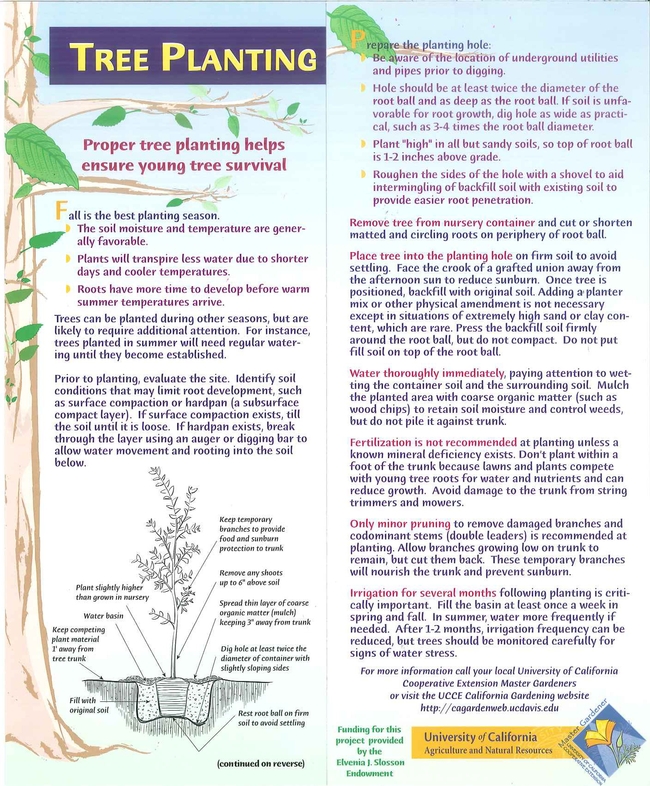
Tree Planting card
It All Began at UC Davis
It all began at UC Davis. The highly acclaimed research published in Current Biology that cracked the 200-year secret of complementary...
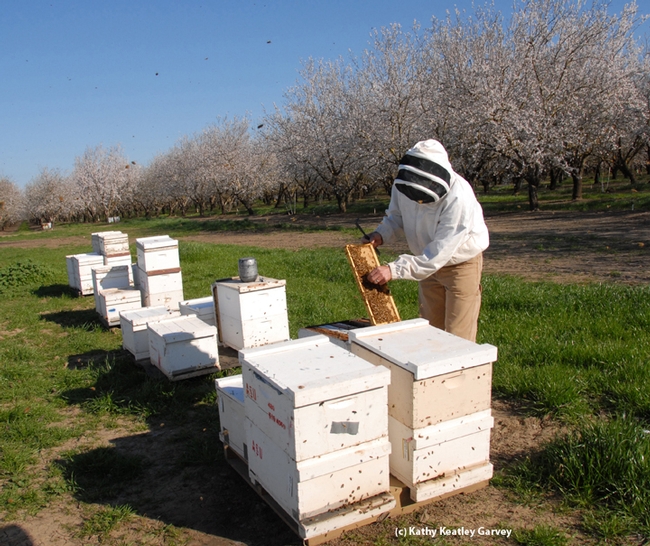
Bee breeder-geneticist Michael "Kim" Fondrk works the Page bees in a Dixon almond orchard. (Photo by Kathy Keatley Garvey)
Long Live Christmas Cactus
In early December, our local Horticulture Club at Solano Community College held a Holiday Plant Sale. They have many great offerings (including handmade wreaths!) which are perfect for gift-giving, so as a gift to myself, I chose two beautiful Christmas cactus (Schlumbergera x buckleyi) of different colors. In the past I’ve tended toward poinsettia’s (Euphorbia pulcherrima), mainly because they are very ‘showy’ and such a staple for the holidays, but I thought I would give these non-prickly cacti a try!
Since becoming a Master Gardener last May, I have become somewhat obsessed with succulents. However, I don’t include cactus (Cactaceae) in that obsession because I personally don’t find them to be very attractive – until I gazed upon my two beautiful specimens at the Holiday Plant Sale!
Unlike many other varieties of succulents, Christmas cactus require a bit more mindful care. Because they originally come from the mountainous jungles of Brazil, they aren’t true cacti like the ones commonly seen in the deserts. In order to help them thrive, their environment in your home should be similar to their natural environment:
Light: Bright, diffused – East or West-facing windows are best. Too much sunlight will burn them and southern exposure provides too much light.
Soil: Rich, well-drained – use sterile potting soil mix or a mix for succulent houseplants. Commercial fertilizers may be helpful in replicating the nutrient-rich soils Christmas cactus thrive on in the wild.
Moisture: Slightly moist, not bone-dry – even though they are drought-tolerant, they don’t like their soil completely dry like true desert cacti. Water throughout the year when soil is dry to the touch, more often during the summer months. Withholding water during October helps trigger the plant’s flowering mechanism and it is more likely to produce abundant flowers for the holidays.
Fertilizer: in the Spring, 10-10-10 – when you see new growth appearing at the ends of the stems, it’s time to fertilize. Fertilize for only a few weeks during the Spring.
Temperature: Preference is cooler, but does just fine in a wide range of temperatures, providing soil moisture is maintained. But to encourage blooming, in mid-September start keeping daytime temperatures in the upper 60’s to mid 70’s and nighttime temperatures in the low 60’s to mid 50’s.
These are the steps I’ll be following with my newfound joys, and with a little TLC, I’m told that I’ll be enjoying these lovely cacti for years to come! And even though mine no longer have blooms, I still find them lovely.
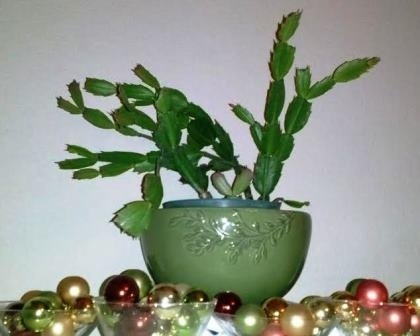
Christmas cacti. (Photos by JoEllen Myslik)

image

